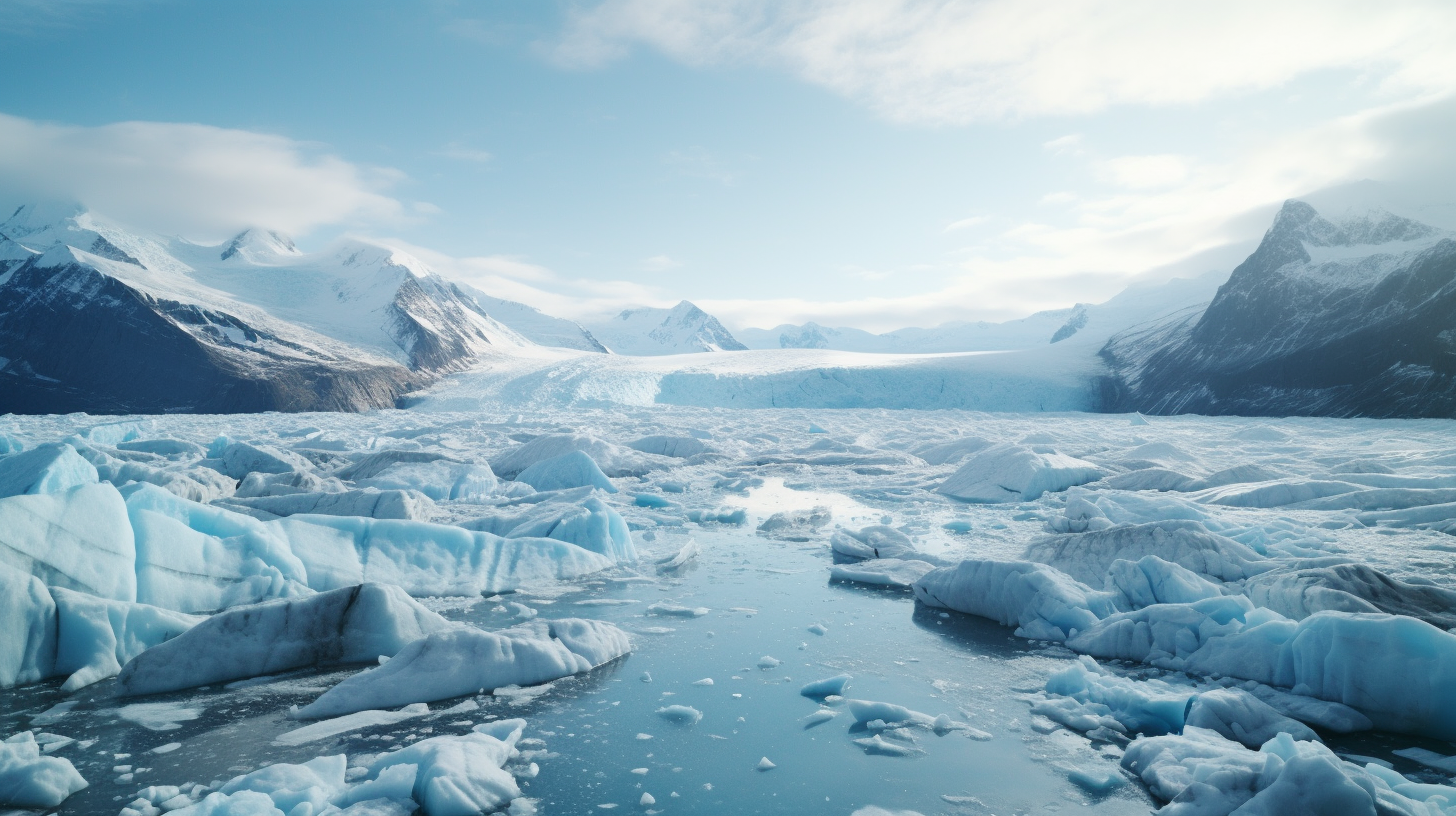In an epoch where the cryosphere should have stood as the last bastion against the siege of climate calamity, we find ourselves chronicling the glacial retreat’s final chapter. The ice—once an eternal symbol of nature’s majesty—now gasps in fragmented sheets, fighting a Sisyphean battle against a world heated by hubris.
Our glaciers, the behemoths that reigned over the polar realms, are dwindling at an unprecedented pace. The echoes of calving icebergs are the cries of despair as the ice refuses to rebuild. Every drop of freshwater melding into the ocean tells a story of millennia lost and ecosystems unraveled. More than just frozen water, these ancient structures served as critical archives of our planet’s history, now dissolving into the tides of the Anthropocene.
Recent data points to a drastic acceleration in glacial retreat. With polar temperatures breaking historical records, scientists flounder to revise their projections, only to find that the ice melt’s reality outpaces their most dire forecasts. Once expected to last centuries, certain ice formations are succumbing within mere decades; scientists document the skylines of vanishing ice with a sense of somber disbelief.
This spectacle is not without its audience. Megaflora barely cling to survival in the Arctic tundra, while polar fauna, emblematic of their ice-shrouded habitats, are now nomads in search of a refuge that recedes faster than they can adapt. Indigenous peoples, the sagacious custodians of icy realms, find their traditions and sustenance sources liquefying alongside the glaciers they revered.
Dive deeper into the melting crevasses, and the ramifications become clear: The loss of glaciers isn’t just a distant spectacle; it heralds a cascade of environmental and socioeconomic disasters. Fertile deltas erode without the sediment protection once delivered by stately glaciers; freshwater scarcity tightens its grip as perennial ice reserves vanish; and sea levels, stealthily uprising, foreshadow forthcoming floods destined to redraw our coasts and displace millions.
Efforts to halt this glacial defeat are as desperate as they are creative. From specially designed blankets to shield the snow from the sun’s fervent gaze to geoengineering dreams that flirt with the atmosphere’s delicate chemistry, humans persist in endeavors to save the remnants. But these measures stink of futility—a hem on a fraying garment too decayed to mend.
And yet, for all its grim connotations, this narrative of the Glaciers’ Last Stand is laced with an eerie elegance. Though the ice refuses to rebuild, it perishes with grace, etching into Earth’s memory a warning that will resonate through generations, long after the last glacier has given way to the sea. But by then, will there be anyone left to heed such a cautionary tale?
As we bear witness to the ice’s demise, let us not forget this: What is melting away is not merely a geological phenomenon, but the very essence of our planet’s life-support system. In the fading albedo, one can discern the outline of our abandoned responsibilities, the consequences of our inertia—a planet sculpted by man’s arrogance, not his ingenuity.
